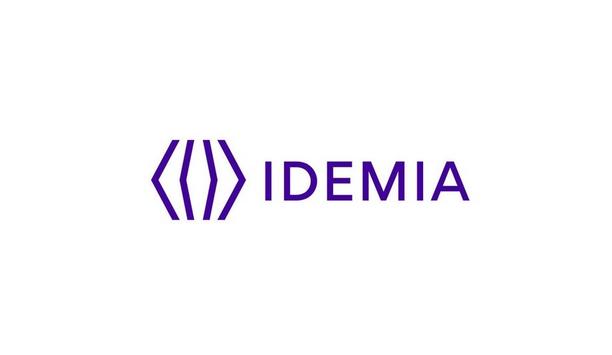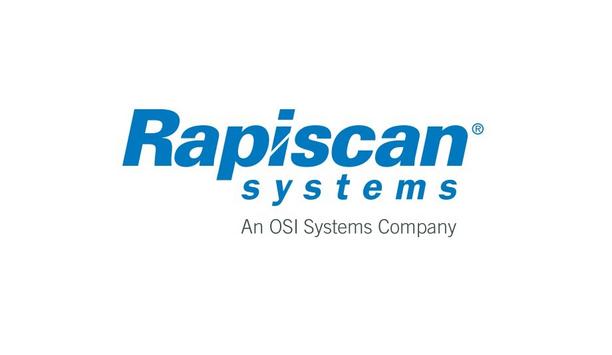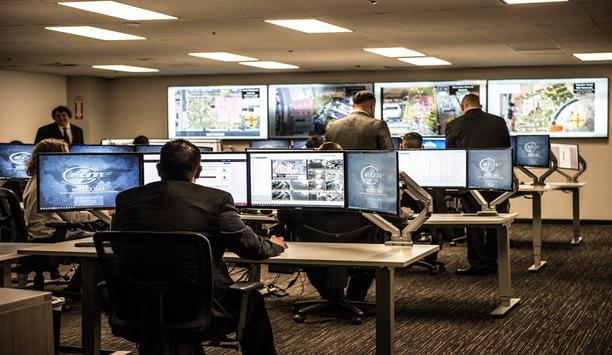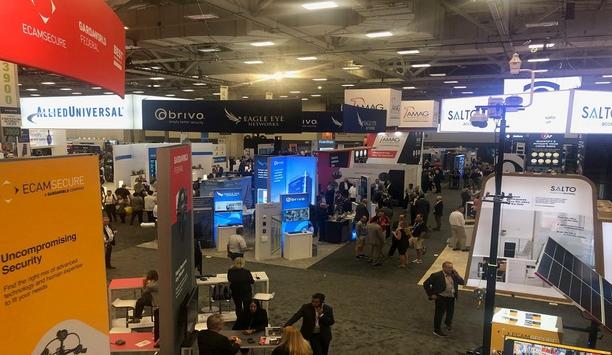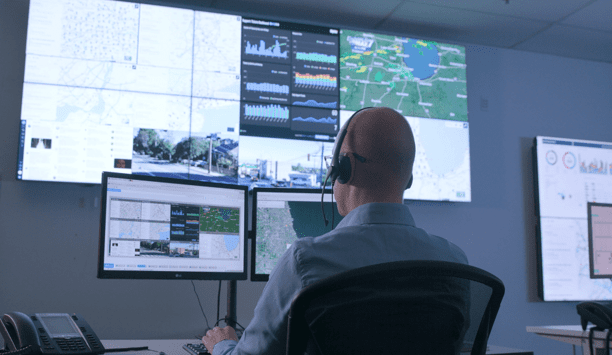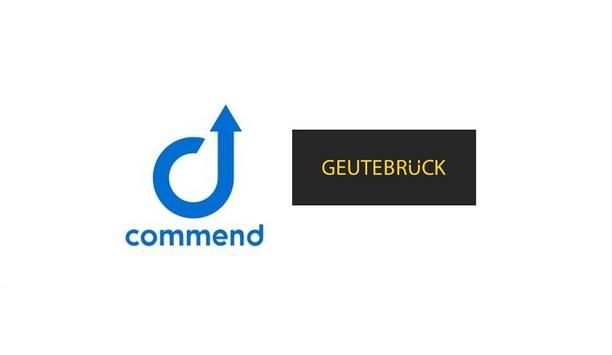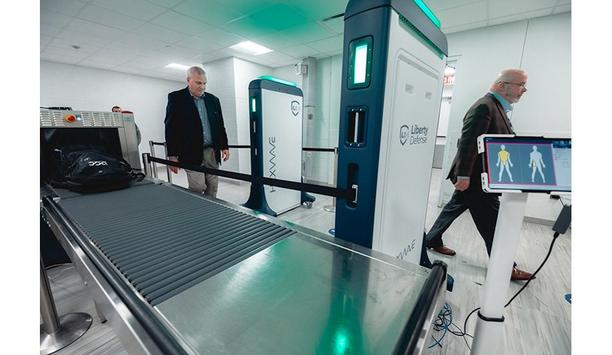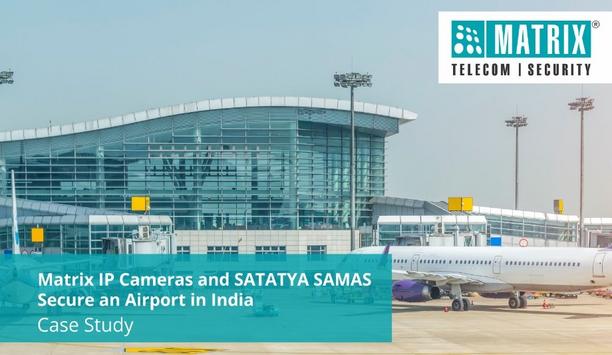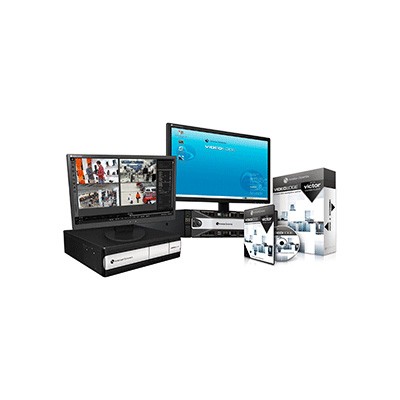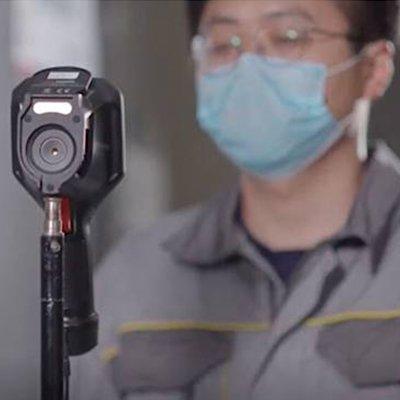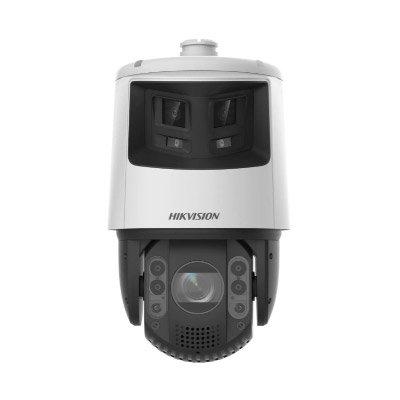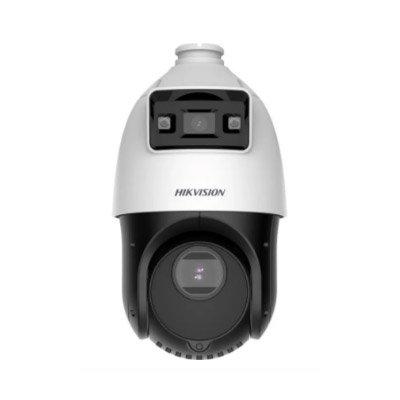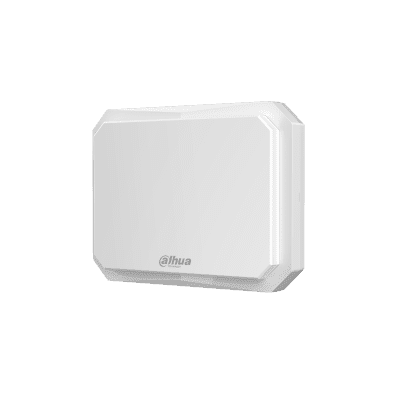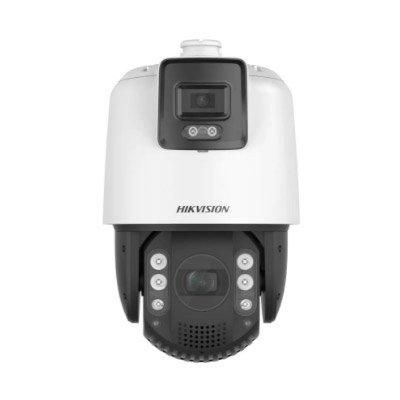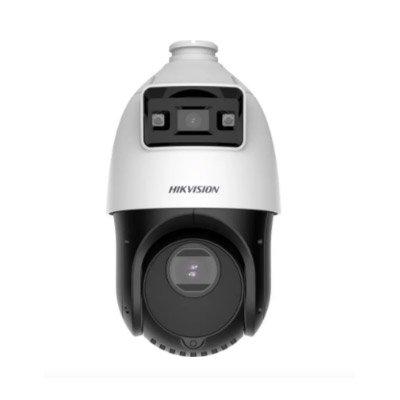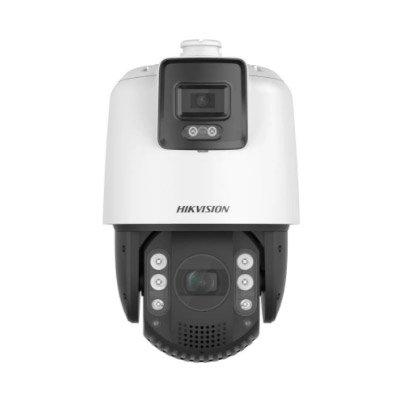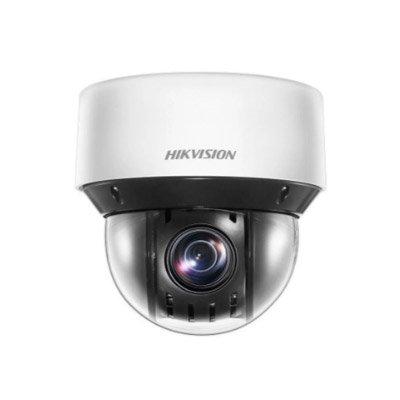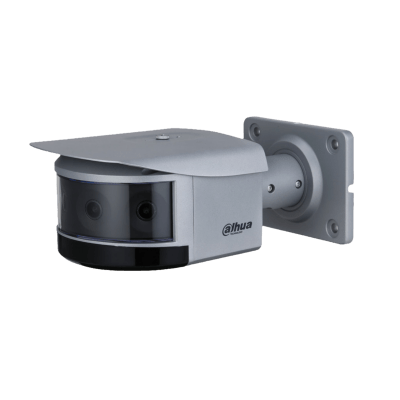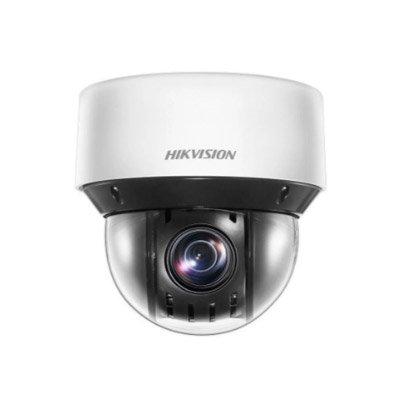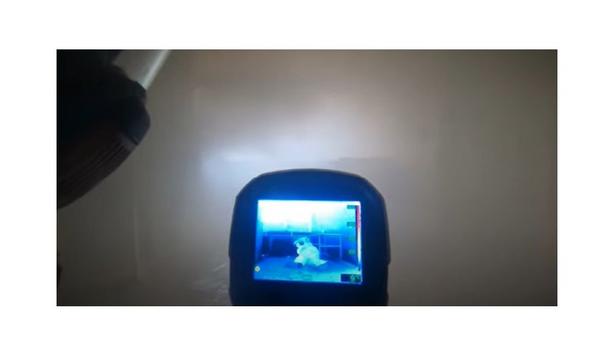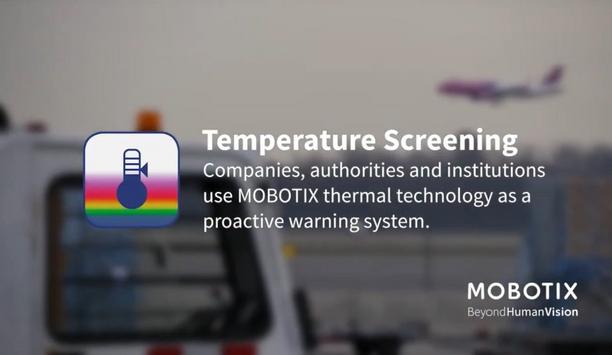Airport security
OSI Systems, Inc. (the “Company” or “OSI Systems”) announced that its Security division received an order for approximately $27 million to provide a range of checkpoint and hold baggage screening solutions to an international customer. Aviation security products Among the systems to be delivered are the RTT® 110 (Real Time Tomography) explosive detection system for screening hold baggage, Orion® 920CT (Computed Tomography) checkpoint screening system integrate...
IDEMIA Public Security North America, the provider of secure and trusted biometric-based solutions, in partnership with the West Virginia Division of Motor Vehicles (DMV), is proud to announce the launch of the next generation of mobile ID (MID) in the state. West Virginia residents will have access to enhanced security and convenience when presenting their ID for airport security screening, age-restricted products, and other identity checks. West Virginia mID app The West Virginia mID app, a...
inter airport Southeast Asia, the premier trade exhibition and conference for airport innovation and technology in Asia, will return to Singapore from 25 to 27 March 2025 at the Marina Bay Sands. The 8th edition is expected to bring together over 3,500 representatives of the aviation industry in Asia, influencers in the airports and airlines community, and 150+ exhibitors, including world-class solution providers and airport equipment suppliers, to connect, find synergies, build partnerships, a...
inter airport Southeast Asia, the premier trade exhibition and conference for airport innovation and technology in Asia will return to Singapore from 25 to 27 March 2025 at the Marina Bay Sands. The 8th edition is expected to bring together over 3,500 representatives of the aviation industry in Asia, influencers in the airports and airlines community, and 150+ exhibitors, including world-class solution providers and airport equipment suppliers, to connect, find synergies, build partnerships, an...
Sensor solutions provider HENSOLDT has once again demonstrated its technological capabilities as part of the multinational ‘Timber Express 2024’ exercise. The OPTARION mission support system (German: EUA for Einsatzunterstützungsanlage) successfully integrated NH90 and TIGER helicopters in a secure data link network and connected them to modern command and information systems. Digital command network “Seamless connectivity and the secure exchange of situational i...
HENSOLDT, Lufthansa Technik Defence and Bombardier Defence announced that the PEGASUS aircraft has completed its first flight out of Bombardier’s facility in Wichita, Kansas. Led by HENSOLDT, PEGASUS is an airborne missionised platform that will integrate the Kalætron Integral SIGINT system to perform highly critical signal surveillance missions for the German armed forces. PEGASUS aircraft’s flight As the aircraft officially enters its next phase and is moving one step cl...
News
CAA International (CAAi) and Rapiscan have announced a strategic collaboration to transform airport security screening and drive the adoption of advanced screener assessment solutions by establishing a global platform to enhance X-ray screening competency within the aviation sector. Under Annex 17 – Security, the International Civil Aviation Organisation (ICAO) mandates that all persons carrying out screening operations are certified by their national civil aviation security programme. Performance standards This certification ensures that performance standards are consistently and reliably met across the aviation industry. The variety of X-ray training and certification systems implemented by National Appropriate Authorities globally has led to a broad spectrum of skill levels among screening personnel, making it challenging to assess and standardise performance reliably. Digital competency testing The gradual uptake has been influenced by factors such as limited access to advanced X-ray technology Training systems for screeners vary widely: some provide opportunities to enhance and refine skills, while others serve to meet compliance requirements without substantial skill development. The global adoption of digital competency testing has been incremental, with only a few countries successfully implementing solutions. This gradual uptake has been influenced by factors such as limited access to advanced X-ray technology and high-quality image libraries, high development costs, challenges in standardising procedures across borders, and concerns about data security. Digital X-Ray Competency Test In response to these challenges, CAAi and Rapiscan are collaborating to implement a Digital X-Ray Competency Test (DXCT). This competency testing system is based on the UK's established Digital National X-Ray Competency Test framework and will be tailored specifically for ICAO member states. The DXCT system will provide a dynamic national assessment platform to monitor and evaluate screener performance, offering comprehensive insights into skill levels across the national civil aviation infrastructure. X-ray screening of baggage and cargo The UK introduced the DNXCT in 2023 to ensure that personnel responsible for X-ray screening of baggage and cargo are fully trained and certificated. This initiative is designed to satisfy national and international regulatory requirements and provides insights into screener competency, aimed at improving screening standards. Through a rigorous design process and careful implementation, the DNXCT delivers a standardised, in-depth evaluation of a screener’s ability to interpret images and identify potential threats or prohibited items. DNXCT The features will be critical aspects of the new DXCT system, designed for ICAO member states Delivered online, the DNXCT is typically completed at the candidate's workplace or training centre under the supervision of a test manager, offering flexible and accessible deployment. These features will be critical aspects of the new DXCT system, designed for ICAO member states. Kevin Sawyer, Head of International Operations - Aviation Security, commented, "We are delighted to extend our collaboration with Rapiscan, a world pioneer in security systems." Threat identification "Ensuring that security screeners are proficient in identifying potential threats through X-ray imagery is vital for strengthening aviation security worldwide." "We look forward to implementing a system that addresses the challenges faced by regulators and industry stakeholders and enhances X-ray screening competencies on a global scale.” Improving screener competency Brian Reid, Global Director – Training and Education at Rapiscan Systems, added, “Rapiscan Systems is thrilled to collaborate with CAAi, leveraging our combined expertise to improve screener competency worldwide." "We are committed to implementing a system that addresses the challenges faced in Aviation Security and improves x-ray screening competency on an international level. Together with CAAi, we are committed to strengthening aviation security and delivering cutting-edge solutions.”
Anviz, a brand of Xthings, a global pioneer in intelligent security solutions, announces the upcoming release of its latest access control solution, the M7 Palm, equipped with cutting-edge Palm Vein Recognition technology. This innovative device is designed to provide superior accuracy, security, and convenience to high-security and privacy-sensitive environments in industries such as banking, data centres, laboratories, airports, prisons, and government institutions. Launching globally today, Anvis is gearing up to revolutionise the way users interact with access control systems. M7 Palm Vein Access Control Device The M7 Palm Vein Access Control Device offers a seamless access experience, allowing users to unlock doors with a wave of the hand. Using Palm Vein Recognition, a top-tier biometric security method, it addresses the limitations of facial and fingerprint recognition by providing a more secure, non-invasive, and user-friendly solution. Palm Vein Recognition Its non-contact nature makes it more hygienic, ideal for environments with strict health protocols Palm Vein Recognition captures the unique pattern of veins inside a person’s palm using near-infrared light. Hemoglobin absorbs the light, creating a vein map, which is converted into a secure digital template through advanced algorithms, ensuring accurate identification. Unlike facial recognition, which may raise privacy concerns, or fingerprint scans, which can be affected by wear, palm vein recognition is discreet, reliable, and harder to forge. Its non-contact nature also makes it more hygienic, ideal for environments with strict health protocols. Seamless and secure user experience The M7 Palm Vein Access Control Device leverages this advanced technology to provide a seamless and secure user experience. With a False Rejection Rate (FRR) of ≤0.01% and a False Acceptance Rate (FAR) of ≤0.00008%, the accuracy of the system far exceeds that of traditional fingerprint or face recognition methods, offering a higher level of protection for critical infrastructure and sensitive information. Device benefits The M7 Palm Vein Access Control Device stands out for its numerous advantages, making it an ideal solution for high-security environments. The benefits of using palm veins are as follows: Security: Palm Vein recognition uses a living biometric, making it nearly impossible for intruders to copy or replicate the pattern. This ensures a higher level of security than external biometric methods like fingerprints or facial recognition. Reliability: The Palm Vein structure remains largely unchanged over time, providing long-term stability and consistency in identification. Privacy: Since the technology scans internal veins rather than external features, it is less intrusive and more acceptable to users who are concerned about privacy. Hygiene: The non-contact nature of the technology allows users to simply hover their hand over the scanner without needing to physically touch any surface, making it an ideal solution for environments that prioritise cleanliness and hygiene. Precision: Palm Vein technology captures a larger surface area than fingerprint or face recognition systems, enabling the scanner to collect more data points for comparison, resulting in highly accurate identification. Moreover, the features of the M7 Palm are designed by meticulously polishing the needs of the users: Enhanced Human-Machine Interaction: Intelligent ToF laser-ranging provides accurate distance measurement, with an OLED display ensuring recognition at precise distances and delivering clear notifications to the user. High-intensity protective design for outdoors: With a narrow metal exterior design, the standard IP66 design ensures the device works well outdoors, and the IK10 vandal-proof standard ensures a robust and stable installation. PoE Powering and Communications: PoE support provides centralised power management and efficiency with the ability to remotely reboot devices, making it a convenient and flexible solution for many network applications. Two-Factor Verification Security: Supports multiple identity combinations, choosing any two of Palm Vein, RFID card, and PIN Codes to complete the identification, ensuring absolute security in special places. Biometric market projections By 2029, the global market for palm vein biometrics is projected to reach $3.37 billion As security becomes a growing priority, demand for biometric solutions like palm vein recognition is surging. By 2029, the global market for palm vein biometrics is projected to reach $3.37 billion, with a CAGR of over 22.3%. The Banking, Financial Services, and Insurance (BFSI) sector is expected to lead this growth alongside military, security, and data centre applications. Smarter, safer, and more convenient security “As a milestone product in the biometrics and security industry, till next June, Xthings will work with more than 200 partners to bring the product to markets such as North America, Western Europe, the Middle East, and Asia Pacific, empowering the clients to enjoy a safer and more convenient experience. $33 Billion market share is there, let's work together!” said Peter Chen, Product Marketing Manager. Though still in the early stages of market adoption, Anviz is committed to advancing palm vein technology. With limited competition, the M7 Palm Vein Access Control Device is poised to make a significant impact. Anviz continues to innovate, delivering smarter, safer, and more convenient security solutions globally.
Wavelynx Technologies, a trailblazer in advanced, secure, and versatile reader and credential solutions, showcases its Wallet solution at the Global Security Exchange (GSX) trade show in Orlando, FL, September 23-25, 2024. Wavelynx Wallet transforms mobile devices into secure credentials, bringing access control into the mainstream and paving the way for future credential management. The system enhances security across various facilities and introduces a new level of convenience, reflecting society’s shift toward wallet and mobile-based solutions for all aspects of daily life. Rapid consumer adoption In 2021, over 7.1 billion people used mobile devices; in 2022, 3.4 billion users (42%) utilised digital wallets. This trend projects to continue, with digital wallet users expected to reach 5.3 billion by 2026, highlighting the global shift towards a mobile-first culture. This trend projects to continue, with digital wallet users expected to reach 5.3 billion by 2026 This rapid consumer adoption, driven by the security, convenience, and improved usability of digital wallets in everyday transactions, underscores the need for universal and pervasive wallet solutions in the access control industry. “Mobile wallets have become mainstream, allowing users to pay for lunch, present concert tickets, and navigate airport security, yet the access control industry has been slow to adapt,” said Rob Lydic, President of Wavelynx Technologies. Simplifying credential management “By leveraging mobile wallet technology, we’re not just catching up, we’re leaping ahead. Our wallet solution significantly bolsters security by verifying individuals’ identities and instilling confidence while simplifying credential management and scalability. Our recently launched Configure by Wavelynx app provides cutting-edge encryption and real-time management features, making the transition to wallet-based access control seamless for installers and end users.” Wavelynx Wallet has been deployed with end users across four continents—North America, India, the UK, and Australia— at some of the world’s largest financial and technology institutions. Mobile wallet platforms Key features of Wallet includes: Seamless Integration: Wallet enables access to doors, elevators, parking garages, lockers, printers, and more, through major mobile wallet platforms. It is fully compatible with Wavelynx Ethos™ readers, ensuring a cohesive and user-friendly experience. Additionally, Configure by Wavelynx facilitates effortless setup and management of digital wallets in the field, eliminating the need for physical configuration cards. Enhanced Security: Wallet offers robust security features, including the ability to instantly deactivate credentials if a mobile device is lost or stolen. This capability significantly reduces the risks associated with lost or compromised physical access badges, ensuring continuous facility security. Convenience and Simplicity: Wallet streamlines operations by removing the need for card printing and physical distribution. Credential management and issuance can be handled remotely by simply providing a link to download their credential, enhancing efficiency for both employees and visitors. Scalability: Designed with flexibility in mind, Wallet supports a variety of physical reader manufacturers, integrating seamlessly with existing security systems and adapting to a range of facility needs. Operational efficiency and security Wavelynx successfully deployed digital wallets for NFC access at Stream Realty Partners' RiverSouth in Austin, Texas. This implementation enabled employees and tenants to access the building and amenities securely and conveniently using their company badges in their respective digital wallets. Integrated via SwiftConnect’s AccessCloud platform and supported by credential readers from rf IDEAS, Wavelynx’s advanced readers, and Vecos smart lockers, the solution significantly improved both operational efficiency and security across the facility. The Wavelynx Wallet Solution is poised to set new benchmarks in access control with its focus on security, convenience, and scalability. Discover the future of secure access and meet with Wavelynx at GSX 2024.
The manufacturing sector is on the cusp of a transformative evolution. Industry 4.0, characterised by the integration of cyber-physical systems, the Internet of Things (IoT), and advanced data analytics, has set the stage for a new era of production efficiency and innovation. However, as they progress further into the digital age, the emergence of Industry 5.0 is redefining the future landscape of manufacturing. This article delves into the journey from Industry 4.0 to Industry 5.0, underscoring why it is crucial for manufacturing companies to embrace these advancements. The foundation of industry 4.0 Industry 4.0, also known as the Fourth Industrial Revolution, has revolutionised manufacturing by introducing smart factories where machines are interconnected, data is seamlessly integrated, and processes are highly automated. These technologies have significantly improved operational efficiency, reduced costs The core components of Industry 4.0 include IoT and connectivity, big data and analytics, automation and robotics, cloud computing, and robust cybersecurity measures. These technologies have significantly improved operational efficiency, reduced costs, and increased production flexibility. Yet, as technological advancements continue, the transition to Industry 5.0 is becoming an imperative for forward-thinking manufacturing companies. The emergence of industry 5.0 Industry 5.0 builds upon the technological foundation of Industry 4.0 but introduces a more human-centric approach. It emphasises the collaboration between humans and machines, aiming to enhance creativity, innovation, and sustainability. Unlike Industry 4.0’s focus on automation, Industry 5.0 promotes synergy between human workers and intelligent machines, leveraging human creativity and machine precision. This new era also enables mass customisation, allowing manufacturers to produce highly personalised products efficiently. Additionally, Industry 5.0 emphasises sustainable practices, resource efficiency, and resilient supply chains to address environmental and societal challenges. Cognitive computing systems These technologies have significantly improved operational efficiency, reduced costs Advanced AI and cognitive computing systems play a significant role in this transformation, offering intelligent solutions that collaborate with humans to solve complex problems and drive innovation. Ethical considerations, inclusivity, and the well-being of workers are also prioritised in the adoption of new technologies. Competitive Advantage: As Industry 5.0 gains traction, companies that adopt its principles early will gain a competitive edge. The ability to deliver personalised products, faster innovation cycles, and enhanced customer experiences will set leaders apart from laggards. Human-machine collaboration Enhanced Workforce Productivity: By fostering human-machine collaboration, Industry 5.0 can amplify workforce productivity. Workers can focus on tasks that require creativity and critical thinking, while machines handle repetitive and complex operations. Sustainability and Corporate Responsibility: Industry 5.0’s emphasis on sustainability aligns with global efforts to reduce carbon footprints and promote environmentally friendly practices. Adopting sustainable manufacturing processes will not only meet regulatory requirements but also appeal to eco-conscious consumers. Resilient supply chains The recent global disruptions have highlighted the need for resilient supply chains Resilient Supply Chains: The recent global disruptions have highlighted the need for resilient supply chains. Industry 5.0’s advanced AI and predictive analytics can help anticipate and mitigate risks, ensuring continuity and reliability. Future-Proofing Operations: The pace of technological advancement is relentless. Companies that begin their Industry 4.0 journey now and plan for Industry 5.0 will be better positioned to adapt to future innovations and market demands. For manufacturing companies not yet on the Industry 4.0 journey, the time to start is now. Implementing IoT, automation, and data analytics will provide immediate benefits and lay the groundwork for future advancements. For those already reaping the benefits of Industry 4.0, it’s essential to begin exploring Industry 5.0 concepts to stay ahead of the curve. Strategic steps for adoption Assessment and Planning: Conduct a thorough assessment of current capabilities and identify areas for improvement. Develop a roadmap for transitioning to Industry 4.0 and gradually incorporating Industry 5.0 principles. Invest in Training: Equip the workforce with the necessary skills to work alongside advanced technologies. Continuous training and development are crucial for successful implementation. Collaborate with Experts: Partner with technology providers, academic institutions, and industry experts to stay informed about the latest developments and best practices. Pilot Projects: Start with pilot projects to test new technologies and approaches. This allows for experimentation and fine-tuning before full-scale deployment. Focus on Sustainability: Prioritise sustainable practices in all initiatives. Evaluate the environmental impact of new technologies and strive for resource efficiency. Promising enhanced productivity The journey from Industry 4.0 to Industry 5.0 represents a significant shift in manufacturing The journey from Industry 4.0 to Industry 5.0 represents a significant shift in manufacturing, promising enhanced productivity, innovation, and sustainability. For manufacturing leaders, embracing these changes is not just an option—it’s a strategic imperative. By starting on Industry 4.0 now and planning for Industry 5.0, companies can secure their position at the forefront of the manufacturing revolution, driving future success and resilience in an ever-evolving landscape. As they consider these advancements, remember that IoT will play a critical role in the transition. At Advantex, they’re here to help users navigate this journey. Whether users are just beginning to explore Industry 4.0 or ready to leap into Industry 5.0, to expertise in IoT solutions can guide users every step of the way.
dormakaba is expanding its activities in the airport business area. Unique pilot projects for the automation of security checks are already underway at various airports and more will be coming soon. dormakaba has also seen a very good order intake in the airport sector for the financial year 2023/24. Argus Air eGates sensor gates Orders for the supply and maintenance of Argus Air eGates sensor gates were successfully implemented at several airports. The total revenue was in the high single-digit million (CHF). To meet the increasing demand from the Indian market, dormakaba has expanded its production centre in Chennai. Passenger screening solutions This self-screening is a new approach but is based on mature technologies, products, and solutions Together with technology companies like Rohde & Schwarz, dormakaba has developed new solutions for passenger screening at airports. This self-screening is a new approach but is based on mature technologies, products, and solutions within the dormakaba portfolio and the portfolios of the other companies involved in the project. Security gates from dormakaba are used, which enable an automatic body scan without a pat-down. Self-screening This innovative approach gives passengers more autonomy during the security check. The use of cameras and sensors can halve the number of security personnel required for security checks, thus freeing them up for other tasks. The new solutions for automated security checks are currently being tested in Las Vegas as part of a pilot project and projects with other airports are already planned. Once the test phase has been completed in the summer of 2025, dormakaba expects to receive orders from airports worldwide. These new solutions will also be able to be used in areas such as critical infrastructure, IP protection, and prisons. Secure, smooth, and reliable access In general, dormakaba is experiencing strong demand in the airport sector. Numerous projects were successfully implemented in the 2023/24 financial year. The newly installed Argus Air eGates are in use at airports including Changi (Singapore), Western Sydney (Australia), Jeddah (Saudi Arabia), Doha (Qatar), Munich (Germany), Xianyang (China), and Copenhagen (Denmark). The eGates enable a secure, smooth, and reliable processing of passengers for access to security-relevant areas of the airports. Production facility expansion The facility, which currently employs around 60 people, covers the needs of the Indian market Due to growing demand, the regional production centre in Chennai was expanded to include the production of the latest Argus Air Self-Boarding/ Security & Lounge product line. The production area was increased by 400m2, making it 4,400m2 for this purpose. The facility, which currently employs around 60 people, covers the needs of the Indian market. The core components, such as the drive and control unit, are supplied by the Bühl production centre in Germany. Automated security checks Till Reuter, CEO of dormakaba, says, "As a global market and innovation pioneer in access control systems for airports, we are experiencing strong demand." "With regional production centres, we can optimally meet demand in growth markets and successfully implement major projects. Technology partnerships with pioneering companies such as Rohde & Schwarz enable us to develop pioneering innovations like automated security checks for airports."
Genetec Inc., a technology provider of unified security, public safety, operations, and business intelligence solutions announced that Heathrow Airport’s multi-year investment in Genetec solutions is enabling them to continuously innovate and transform operations. The joint effort provides Heathrow with a unified view across large-scale airport operations that is securing people and assets, bringing efficiency, and enhancing the passenger experience while ensuring data privacy and cybersecurity compliance. London Heathrow London Heathrow is Europe’s busiest airport, handling approximately 80 million passengers and 14 million tonnes of goods annually. Over 76,000 employees work around the clock to ensure the airport’s smooth operations across its 1,227-hectare site, including maintaining passenger flow, securing the premises, and managing over 1,300 daily take-offs and landings for 89 different airlines. Genetec Security Centre Genetec solutions are used to monitor over 150 km of baggage belts and facilitate the daily entry and exit Heathrow initially deployed Genetec Security Centre to bring all of its IP security systems onto one unified platform. What began as a 2,000-camera deployment in 2016 has since more than quadrupled in size, incorporating everything from video and access control to LIDAR, analytics, numberplate recognition, and more. Genetec solutions are used to go far beyond security. For example, Genetec solutions are used to monitor over 150 km of baggage belts and facilitate the daily entry and exit of over 150,000 vehicles. Passenger management “We’re essentially running a small city operation that happens to be called Heathrow,” explains Danny Long, IT Product Owner for physical security products at Heathrow. “Alongside the traditional airport security functions, we’re responsible for the monitoring of roads, retail space, three train stations, a bus terminal, offices, a church, fuel stores, a high voltage electrical network, and all the other associated infrastructure that maintains passenger flow.” Customised dashboards Some operational staff are given the tools to monitor passenger flow and are automatically notified Genetec Security Centre supports 90 different stakeholder groups working across 110 distinct control rooms, all of whom have different needs and access rights. Customised dashboards enable individual teams and third parties, such as police, government agencies, airlines, and retailers, to focus on their specific tasks. For example, some operational staff are given the tools to monitor passenger flow and are automatically notified when security queues grow too long. Meanwhile, colleagues in IT don’t see camera feeds. Instead, they have access to system health dashboards that notify them of devices that have fallen offline or require software/firmware updates. Area identification “The joy of working with London Heathrow is that the team is constantly striving to put our system through its paces and identify new areas where it can add value,” states Simon Barnes, Director of Business Development, Genetec, Inc. “While our software is configured to their requirements at the time, once in the field, new requirements emerge, and we have to adjust to their reality." Workable solutions “My job is to translate business requirements into workable solutions and Genetec provides me with the valuable tools with which to achieve that,” concludes Long. “Our experience with Genetec has been very positive. We’re only looking to expand in terms of the size and usage of the system.”


Expert commentary
The average business owner or investor has some kind of security precaution in place, especially in the after-hours when there are fewer deterrents to inhibit criminal activity. Security guards, video surveillance systems, motion sensor lights, or even just fake cameras placed around the property are some of the common options people choose. Future of overnight security Smart business owners are starting to realise, however, that some of these traditional security measures are becoming antiquated and no longer cutting. The now and future of overnight security is in remote guarding. Pioneered by companies like Los Angeles-based Elite Interactive Solutions, which was founded back in 2007, remote guarding is revolutionising the overnight security business. Minimising criminal activity Remote guarding is fast becoming the most popular choice among commercial end-user property owners Remote guarding utilises a combination of cutting-edge technology, “digital guards,” highly trained security agents, and local law enforcement if and when necessary to minimise the potential of criminal activity. For those adequately enlightened to its overwhelmingly impressive crime prevention capabilities, remote guarding is fast becoming the most popular choice among commercial end-user property owners to secure and protect their investments. What Is remote guarding? Remote guarding is a revolutionary concept and increasing trend in security systems that utilises a combination of methods to effectively analyse potential threats to property. Cameras and/or other monitoring devices running highly advanced algorithmic software are installed in strategic areas or vulnerable places onsite and remotely located security agents are immediately notified of any activity within a designated perimeter of the property. A blend of AI, cybersecurity, and video analytics When properly deployed by an expert provider, the technology stack includes a proprietary blend of video analytics, artificial intelligence, cybersecurity, and more. Done right, “noise” is effectively filtered out, allowing agents to act on legitimate alerts and achieve zero false alarms communicated to first responders. Today, there are a lot of terms and descriptions tossed around about remote guarding, remote video, virtual guarding, etc., but those attributes must be present to represent the true definition of the offering and its many virtues. Realtime situational awareness Many systems have a two-way speaker that allows the security agent to give a verbal warning When specially trained security agents are alerted to trespassers, possible intruders, or other suspicious activity, they analyse the situation in real-time and determine the necessary level of action. Many systems have a two-way speaker that allows the security agent to give a verbal warning, known as a voice-down, to the individual(s) that they are being watched. Most perpetrators, often believing the response is emanating directly from security personnel on the property itself rather than from a remote command centre, flee immediately. However, if the threat persists, the security agent enlists local law enforcement to get on the scene. Customised remote guarding When properly deployed, remote guarding systems are also customised to specific properties. A team of consultants visits the client’s property to evaluate its vulnerabilities and where to best place cameras and/or other monitoring devices for system efficacy. Traditional security shortfalls According to Keith Bushey, a retired commander for the Los Angeles Police Department, there is much frustration between law enforcement officers and potential victims of crime due to the historically unreliable performance of traditional burglar alarm systems and central monitoring stations. He states about 90% of security-related calls are false alarms, a problem that has been well-documented through the years. Onsite challenges When a legitimate emergency does occur, the perpetrators have often already done their damage When a legitimate emergency does occur, the perpetrators have often already done their damage and/or escaped by the time law enforcement arrives. Onsite security guards are not the remedy either as they bring their own set of issues and challenges. Unexpected costs Traditional security systems can also have unexpected costs. The cost is not only in the security guards’ paycheck or the cost of the equipment itself. The cost comes when an actual incident occurs. In worst-case scenarios, the security guard(s) are injured, the business suffers inventory loss, and/or damage is sustained to the property. The medical and other costs for the security guard(s), the loss of inventory, property damage, deployment of law enforcement resources, and possible fallout of legal expenses all add up. Even in the best-case scenario, false alarm expenses incur if law enforcement is dispatched. These, among many others, are some of the primary issues that remote guarding resoundingly answers as a superior alternative. A bounty of benefits Remote guarding systems have been proven to cut costs and be more effective than traditional security systems. Even though the monthly monitoring costs of remote guarding are significantly higher than traditional intrusion detection system monitoring, the much higher effectiveness in crime reduction, elimination of false alarms, and augmenting or replacement of manned guards result in a substantially higher return on investment (ROI) to the end user. Easy tracking of threats The security cameras already have their image captured on record, making them easier to track down For example, case studies have demonstrated reduced security costs for clients by 60%, on average. These reductions have come from the costs of security staff, inventory, or property loss, plus saving money on insurance premiums and deductibles. The nature of remote guarding reduces the risk and costs of false alarms, with professional security agents able to determine an actual threat before law enforcement is called. In a rare instance when a perpetrator escapes before law enforcement arrives or can detain the individual(s), the security cameras already have their image captured on record, making them easier to track down and identify. Reduction of false alarms The significant reduction in false alarms is greatly appreciated by law enforcement, as it allows them to focus on real emergencies or crises. Better relationships are also developed between clients and law enforcement, as remote guarding systems are highly reliable in providing accurate and real-time information to officers as they approach the scene. In short, it assists law enforcement in doing their job more effectively, as well as more safely thanks to having eyewitness information before engaging in an active crime scene. Partnership When you combine the decreased cost with the increased efficiency and success rate, it is easy to see why many commercial end-user property owners across the country are making the shift to remote guarding. It’s also an outstanding opportunity for professional security dealers and integrators to partner with a remote guarding services provider to bring a superior solution to their end customers and pick up a recurring monthly revenue stream in the process.
It’s no secret that the data security sector is constantly changing. It has an annual CGR of about 12.3%. Future trends in data security Much of this has to do with the rise of cybercrime in recent years, with reports showing that cyberattacks happen as often as every 39 seconds. To combat the growing rate of cybercrime, data security has been on the rise. As we journey further into this era, it becomes evident that a spectrum of significant trends is molding the future of data security. This exploration delves into a selection of these trends, unraveling their importance and the potential implications they carry 1. AI security tools will increase Artificial Intelligence is also being used in the development of smart attacks and malware The introduction of Artificial Intelligence in the data security industry brought significant changes, especially in cybersecurity. AI has been the golden standard for face detection, natural language processing, automated threat detection, and automated security systems. Additionally, Artificial Intelligence is also being used in the development of smart attacks and malware, bypassing even the latest security protocols in data control. And as time progresses, AI security tools will flourish and dominate the scene. Let’s take a more in-depth look at three of the top AI security tools. Targeted attack analysis tool Manufacturers utilise targeted attack analysis tools to uncover targeted and stealthy attacks. Artificial Intelligence can be applied to the program’s capabilities, processes, and knowledge. For instance, Symantec launched this tool to combat the Dragon 2.0 attack in 2022. The phishing attack reprimanded multiple energy companies while trying to gain access to their operational networks. Targeted Attack Analysis Tools can analyse incidents and look for similarities from previous situations. They also help detect suspicious activities and collect all the necessary data to determine whether a specific action is malicious. Intercept X tool Results from the Intercept X Tool feature high accuracy and a low false positive rate Sophos, a British security hardware and software company, launched the Intercept X Tool. It engages a neural network that records and analyses data like a human brain. Sophos’ Intercept X Tool can extract features from a single file and perform a deep analysis. It detects malicious activities within 20 milliseconds. Plus, it’s also trained to work on bi-directional sharing and real-world feedback of threat intelligence. Results from the Intercept X Tool feature high accuracy and a low false positive rate. IBM Watson Technology IBM’s QRadar Advisor uses IBM Watson Technology, a unique AI tool for fighting cyber attacks. Artificial Intelligence can auto-investigate activities and indicators for potential exploitation or compromise. With cognitive reasoning, IBM Watson Technology can present critical insights to accelerate the response cycle. Security analysts can utilise this technology to search for threat incidents, reducing the risk of letting them fly under the radar. 2. Blockchain as a security solution It guarantees no points of failure or hackable entrances that can expose datasets inside the system Blockchain is a type of distributed ledger technology (DLT) that aims to establish trust within an untrusting ecosystem. Today it’s one of the most robust cybersecurity technologies in the industry. Blockchain utilises a decentralised ledger system, but your team members can still gain access to transparent information in the cloud. Members can also record, pass along, and view necessary transactional data in the blockchain. The entire blockchain process maintains data integrity within the system while establishing trust among team members. It guarantees no points of failure or hackable entrances that can expose datasets inside the system. Cybersecurity, biometrics Cybersecurity primarily benefits from these features because blockchain can create a secure and robust wall between data and hackers. On top of that, blockchain ledgers can include biometrics like fingerprints and retina scans. These prevent hackers from accessing any private data. Because blockchain is decentralised, it also limits hackable data. Together with the technology’s record-keeping system, each node is provided insight into data manipulation exposing real-time cybercrime attempts. 3. Increased and widened access control Without access control, expect your company to be open to security issues, including theft, data loss, and breach of data Access control is critical in data security. More than a valuable security tool, business leaders can use access control to regulate people accessing any given resource. A company with an IT security setting can control who has the liberty to edit certain files. One of the primary goals of access control is to minimise threats or attacks to organisations and businesses to keep people and data secure. Without access control, expect your company to be open to security issues, including theft, data loss, and breach of data protection laws. Benefits The benefits of increased and widened access control include: Identifying who can access and control your data at specific time intervals. Protecting data from overwriting, accidental deletion, and malicious intent. User permissions that can be readily changed. Compliance and regulation with data privacy laws. Central management of access to data through a reporting portal or a dashboard. Multi-factor authentication Access control comes in various types and systems, so it’s critical to know the features of what you’re looking for. The most common type is multi-factor authentication or MFA. It involves multiple steps before logging in, requiring the user to enter other relevant information besides the password. Some other examples of information include biometrics, answering a security question, or entering a code sent to the user’s email address. Two-factor authentication, role-based access control Two-factor authentication further prevents unauthorised entries that can result in unnecessary data possession Two-factor authentication further prevents unauthorised entries that can result in unnecessary data possession. Another type of access control is role-based access control. In this setup, only one individual can set up access guidelines and grant permissions to specific team members within an organisation. 4. Greater use of the zero-trust security model The zero-trust security model is a framework that requires every user within and outside the organisation to undergo authentication, authorisation, and validation. These are all essential to ensure proper security configuration before access is granted to the company’s applications and data. A zero-trust model assumes that anyone can cause data breaches and that a traditional network edge is not taken into effect. Moreover, it addresses the following modern-day challenges: Hybrid cloud environments. Security of remote workers. Ransomware threats. This framework utilises the combination of multiple advanced technologies, including: A risk-based multi-factor authentication. Endpoint security. Identity protection. Cloud workload technology. The zero-trust model uses all these innovative tools for system identification, user verification, access consideration, and system security maintenance. Constant validation and monitoring Enforcing strict policies and compliance with data privacy laws are also essential Additionally, it also considers data encryption, email security, and asset verification before establishing connections with applications. The architecture of a zero-trust framework requires constant validation and monitoring of the users and the devices they are using. Enforcing strict policies and compliance with data privacy laws are also essential. More importantly, the zero trust architecture requires all organisations to be aware of all their available services and accounts to gain complete control of data handling and manipulation. 5. Increased privacy regulations Privacy regulations and policies guide organisations in proper data control, handling, and security. These policies guide organisations in proper data control, handling, and security. As a responsible business owner, you must comply with these regulations to avoid legal issues. With cybersecurity attacks becoming common, expect increased and stricter privacy regulations to be released in the next few years. While current policies are still taken into effect, various modifications and adjustments will occur to compete with the rising numbers of data breaches, thefts, data loss, and more. California Privacy Rights Act (CPRA) Currently, the California Privacy Rights Act (CPRA) is the most comprehensive legislation on state data privacy. It only started to take effect on January 1, 2023. The CPRA introduces the following principles: Broad individual consumer rights. Significant duties of people who need to collect sensitive and personal information. Additional definitions of data privacy and security. An individual’s duties include releasing information about data collection to concerned data subjects and proper access, correction, and deletion of information. Final thoughts 2023 is a big year for data security. Trends such as increased adoption of zero-trust policies, a greater reliance on AI security tools, and the implementation of blockchain as a security solution are all things we expect to see shortly. Staying up-to-date with these trends is important for keeping your business current and ensuring that you’re adhering to new and changing regulations. Doing so can give you an edge over the competition and keep you out of legal hot water.
Open platform video technology software is more than just a product; it's a tool that helps customers achieve their desired business outcomes. Safety, round-the-clock security, and increased operational efficiencies are now the norm due to video technology. Responsible Technology Despite humanity’s impressive technological advances, we also recognise the immense responsibility that comes with technological innovation. It's not enough to focus solely on the positive impact video technology can make, we must also be vigilant in identifying and addressing any potential negative consequences it can have on society and its citizens. This is the role of Responsible Technology. Data privacy We want to use all the good things that technology innovation brings, whether it be video, AI, ML, facial recognition, etc. We want to use all the good things that technology innovation brings, whether it be video, Artificial Intelligence, machine learning, facial recognition, etc. to serve people in societies in a responsible way. That means making sure that we regulate technology in a way that respects human rights and data privacy. Addressing the challenges The challenge is, that rather often technology leaders and policymakers either have conflicting interests or collaborate too late. To be responsible, business leaders must support their societies and policymakers in making regulations in the interest of the common good. At Milestone Systems, we are actively looking at how we develop our software responsibly, how our partners responsibly sell our software, and very importantly, how our customers use our software with a responsible mindset. Ensuring good corporate governance As a long-time partner within the security industry, we’re celebrating our 25th Anniversary this year, we are supporting the regulation of video technology for the good of society. However, it of course needs to strike the fine line between the right legislation and not hindering innovation. UNGP The UNGP is the most authoritative and widely adopted set of principles for responsible business At Milestone Systems, we want to play an active role in this and that is why we have pledged our support to the UN's Guiding Principles on Business and Human Rights (UNGP). The UNGP is the most authoritative and widely adopted set of principles for responsible business. The principles call on governments and companies to identify, prevent, mitigate, and remedy actual and potential human rights abuses. Since its launch in 2011, the UNGPs have received wide support from states, civil society organisations, and the private sector, making them the key global foundation for business and human rights. Protect, respect, and remedy Through this commitment, we are taking steps to ensure good corporate governance and ethical standards in the development of our technology. We're generating mechanisms to prevent misuse and we are building educational practices internally. Based on the UNGP’s three pillars: protect, respect, and remedy, we are developing a set of Responsible Technology Principles and procedures for the development, selling, and use of our products. Need for video technology regulation In addition, we are currently evaluating all the various technology areas in which our video software can be used, such as with third-party integrations that utilise e.g., facial recognition. We are mapping out the advantages and disadvantages for societies. One key area of concern is how local authorities are mapping and storing data about us as individuals. This is the reason why we're inviting more legislation to regulate video technology rather than less. Engaging With policymakers We are meeting ministers and trade organisations as we believe this needs to be a joint effort where all parties are heard We are proactively reaching out to and connecting with policymakers and other relevant stakeholders to discuss our approach to and take on Responsible Technology and encouraging the political landscape to work with us around regulation and legislation. We are meeting ministers and trade organisations as we believe this needs to be a joint effort where all parties are heard and where we can openly weigh the advantages and the challenges of technology, whether it is video, facial recognition, machine learning, Artificial Intelligence, or other technologies. Striking a balance Implementing Responsible Technology is a journey, not a destination. To give it the focus needed, we have created a dedicated team to implement this initiative at Milestone Systems. At the same time, we are reaching out to the political landscape to discuss how we balance regulation without hindering innovation. Video technology used ethically We are a global company with worldwide operations, and we are having dialogues about how video technology is being used and how we can have meaningful talks about what regulation and legislation should look like. However, we don’t necessarily want to limit access to the technology itself. Facial recognition We encourage the policymakers to engage with us in the industry so that together we can strike the fine line Facial recognition is a great example of this. The EU is considering making live facial recognition illegal. That would be a huge inhibitor of proactive terrorism prevention. For example, if a well-known terrorist is walking down the street and is being mapped out against Interpol’s most wanted list, the authorities should be able to react. However, if a person walking down the street but is not mapped out or does not have any priors then the city should not be allowed to store the data of that individual’s whereabouts at that point in time. This potential legislation is concerning to me as a citizen of Europe. Instead, we encourage the policymakers to engage with us in the industry so that together we can strike the fine line for the better good of all of us. Maintaining high ethical standards We have a firm understanding and expectation that ethical standards are a huge driver in the security business. Citizens are not in favour of technology companies abusing data about them and monetising from things that they have not opted in to do. Soon, I think we will see many more companies and governments leaning toward suppliers that do have a responsible mindset and high ethical standards for partnerships. Ethical practices Our journey toward Responsible Technology is an ongoing process, and we must remain steadfast in our commitment to ethical practices and the protection of human rights. We recognise that the rapidly changing technological landscape continually presents new challenges and opportunities. For this reason, we continuously look into how we can improve, for example, our end user licence agreements to avoid potential human rights abuses. An industry responsibility Security companies must prioritise careful planning and preparation, including developing policies and procedures For Responsible Technology to truly become a reality, compliance with international human rights laws and data privacy regulations is critical. Security companies must prioritise careful planning and preparation, including developing policies and procedures that govern the ethical use of video surveillance systems. The secure and ethical community In today's technology environment where deep integrations, machine learning, and artificial intelligence are becoming the norm, Responsible Technology is more relevant than ever. The security industry has a unique opportunity to set an example for other sectors by promoting a secure and ethical development community that prioritises Responsible Technology, trustworthy data collection, and the protection of human rights. We must all rise to this challenge and embrace our role as ethical leaders for the greater good of both people and societies.
Security beat
Companies at GSX 2023 emphasised new ways that technologies such as artificial intelligence (AI) and the cloud can address long-standing issues in the security market. Among the exhibitors at the event in Dallas were companies seeking creative ways to apply technology, lower costs, and make the world a safer place. Reflecting on the exhibition, here are some additional takeaways. Expanding AI at the edge i-PRO is a company reflecting the continued expansion of edge AI capability in the security market. Today, more than half of the company’s lineup supports AI at the edge so the customer has a wide choice of form factors when seeking to leverage the feature set. AI processing relay, extended warranty i-PRO is increasing their warranty period from 5 to 7 years, which could be a lifetime warranty in some cases I-PRO also has an “AI processing relay” device that accepts non-AI video streams and applies edge analytics. AI has progressed from a high-end technology to a feature available in a variety of cameras at different price points. i-PRO is also increasing its warranty period from 5 to 7 years, which could be a lifetime warranty in some cases depending on a customer’s refresh schedule and lifecycle management. Active Guard, MonitorCast The company’s video management system (Video Insight) is continuing to build new features including “Active Guard,” an integrated metadata sorter. Their access control platform, MonitorCast, is a Mercury-based solution that is tightly integrated with Video Insight. Their embedded recorders now have PoE built in. “We can move at a faster pace to fill out our product line since leaving Panasonic,” says Adam Lowenstein, Director of Product Management. “We can focus our business on adapting to the market.” Emphasis on retail and other verticals Shoplifting is a timely issue, and retail is a vertical market that got a lot of attention at GSX 2023. “We see a lot of retailers who are primarily interested in protecting employee safety, but also assets,” says Brandon Davito, Verkada’s SVP of Product and Operations. “Shrinkage is a CEO-level priority.” “Retailers are getting more engaged with security posture, instead of letting perpetrators walk,” Davito adds. Intrusion detection Verkada has an intrusion product that will notify a central station if there is an alarm On the alarm side, Verkada has an intrusion product that will notify a central station if there is an alarm, and operators can review videos to confirm the alarm. Other capabilities seeking to discourage trespassers include sirens, strobes, and “talkdown” capabilities. International expansion Verkada continues to expand internationally with 16 offices in all, including Sydney, Tokyo, and London. The core value proposition is to enable customers to manage their onsite infrastructure more simply, including new elements such as PTZ cameras, intercoms, and visitor management. Verkada emphasises ease of use, including a mobile application to allow access to be managed across the user base. Forging partnerships “We are committed to the channel and industry, and we continue to build relationships and expand our reach,” says Davito. Among the industry relationships is a new partnership with Convergint, which was hinted at during the show and announced later the same day. They are also expanding their partnerships with Schlage, Allegion, and ASSA ABLOY. Working with other verticals They offer new features for K -12 schools, and a new alarm platform is easier to deploy and manage Verkada has also found success across multiple other verticals, notably healthcare, where they integrate with an electronic medical records system. They offer new features for K-12 schools, and a new alarm platform is easier to deploy and manage. They are integrating wireless locks to secure interior doors in schools, looking to secure the perimeter, and installing guest management systems. Transitioning the mid-market to the cloud Salient is squarely focused on the “mid-market,” a large swath of systems somewhere between small businesses and enterprise-level systems. Pure cloud systems are not as attractive to this market, which has a built-out infrastructure of on-premise systems. Adding a camera to an existing system is easier and less expensive than tying it to the cloud. Benefits of cloud It’s a market that may not be ready for the pure cloud, but there are benefits to be realised from adding a cloud element to existing systems. “We are continuing to augment our premise-based solutions with added cloud capabilities and flexibility,” says Sanjay Challa, Salient’s Chief Product Officer. The feedback Salient hears from their customers is “I want to own my data.” The hybrid cloud approach offers the right mix of control, flexibility, and unit economics. Cloud add-on capabilities We want to provide the flexibility for customers to go full-cloud as it becomes more economically attractive" Cloud add-on capabilities include bringing more intelligence about system operation to the user via the cloud. Over time, Salient expects to sell more cloud-centric offerings based on feedback from integrators and customers. “We want to provide the flexibility for customers to go full-cloud as it becomes more economically attractive over time,” says Challa. Vaidio AI technology Salient seeks to be a transition pioneer to help customers realise the path to the cloud. Their approach is “crawl, walk, run,” and helping customers make the transition at each stage. Salient has added AI to its product offering, incorporating Vaidio AI technology from IronYun into a powerful suite and broad array of on-premise analytics, which are gaining traction. The seamless approach makes it easy for customers to embrace AI analytics, although Salient remains broadly committed to open systems. Addressing ‘soft’ features for integrators AMAG is in the process of enhancing its product line with the next generation of access control panels. However, “product” is just part of the new developments at AMAG. In addition to “hard” features (such as products), the company is looking to improve its “soft” features, too; that is, how they work with the integrator channel. Integrator channel Rebuilding a process to make your organisation more efficient, is relatively easy; it just takes a lot of persistence" “We have the depth of our legacy customer base we can learn from, we just need to close the feedback loop quicker,” says Kyle Gordon, AMAG’s Executive Vice President of Global Sales, Marketing, and commercial Excellence, who acknowledges the value of reinstating face-to-face meetings after COVID. “We are laser-focused on nurturing our integrator channel,” he says. “Developing new features takes time, but rebuilding a process to make your organisation more efficient, that’s relatively easy; it just takes a lot of persistence,” says Gordon. More cohesive internal communication is another useful tool, he says. Disrupting the cloud based on price Wasabi is working to make cloud applications less expensive by offering a “disruptive” price on cloud storage, $6.99 per terabyte per month (80% less than hyperscalers). Contending “hyperscalers” like AWS are charging too much for cloud storage, Wasabi is using its own intellectual property and server equipment co-located in data centres around the world. Wasabi sells “hot cloud storage,” which refers to the fact that they only have one tier of storage and data is always accessible. In contrast, a company such as AWS might charge an “egress fee” for access to data stored in a “colder” tier. Cloud storage “We saw that several video surveillance companies had not yet adopted cloud storage, and we saw an opportunity to make it easy to use,” said Drew Schlussel, Wasabi’s Senior Director of Product Marketing. “We just install a little bit of software that allows them to store data in the cloud and bring it back from the cloud.” Performance, protection (cybersecurity), and price Wasabi works with integrators, resellers, and distributors and also integrates with VMS companies Wasabi works with integrators, resellers, and distributors and also integrates with VMS companies such as Genetec and Milestone. Emphasising performance, protection (cybersecurity), and price, their data centres are certified to SOC 2 and ISO 27001 standards. Faster throughput for weapons detection Xtract One is a young company focusing on weapons detection in a time of accelerated concern about gun issues post-COVID. Founded in Canada and based on technology developed at McMaster University, Xtract One has found a niche in providing weapons detection at stadiums and arenas. These customers already have budgets, and it is easy to shift the money to a newer, faster technology. Madison Square Garden in New York City is among its customers. Cost savings solution Xtract One can increase throughput to 30 to 50 people per entrance per minute (compared to 5 to 6 people per minute when using metal detectors). The solution doesn’t require anyone to empty their pockets and the system alarms on items beyond guns and knives. Using Xtract One allows customers to reduce the number of screening lanes and security staff, providing additional cost savings, all while getting fans through the screening process in half the time. Purpose-built sensors The system uses purpose-built sensors looking for specific characteristics, such as reflective and density properties In addition to stadiums and arenas, Xtract One, formerly Patriot One, is also getting “inbound” interest from schools, hospitals, manufacturers, and other verticals that makeup 50% of their business. “We’re on a rocket ride, mainly because the weapons issues are not going away,” says Peter Evans, CEO and Director at Xtract One. The system uses purpose-built sensors looking for specific characteristics, such as reflective and density properties, all correlated by an AI engine. Providing early warning of violence ZeroEyes is another company focused on weapons detection. Their AI gun detection system works with video images to identify if someone is “brandishing” (carrying) a weapon. In other words, the system does not detect concealed weapons. Identifying someone carrying a weapon provides early warning of a possible violent act. Increased response with AI-enables images Images are identified by AI and sent to a monitoring centre where a human confirms the image before contacting first responders. Knowing the location of a shooter enables staff to lock entry points, move people to safety, and direct first responders. The company was founded to leverage existing camera views to stop mass shootings and gun violence by reducing response times.
Audio-video technologies have historically been a silo in the enterprise, separated from the larger network infrastructure by their use of analogue, hard-wired and proprietary connections. Software-defined system However, AV devices such as video walls and corporate signage add more value to security and emergency response operations when they are connected to the larger IT network and can interface seamlessly with other systems. That’s the approach provided by Userful, which offers a software-defined system for end-to-end control of audio-video applications in an enterprise, using a web browser and standard industry protocols. The use of software avoids the need for proprietary hardware and the compatibility challenges of multiple hardware systems operating in silos. It also yields visibility and control throughout the system. Single software system The single software system grants IT, administrators, the ability to govern multiple platforms The single software system grants IT, administrators, the ability to govern multiple platforms, while providing individual departments access to the specific applications they need. The emphasis is on meeting stakeholders’ functional requirements using a system governed by the IT department. The data travels across the IT network infrastructure without being blocked by the use of proprietary hardware and cabling, for example. Digital transformation Avoiding the analogue (hardwired) approach enables enterprises to “digitally transform” the operation of their audio-video devices. The approach is especially useful at the intersection of security and digital signage. “We give the power back to the local IT administrators, who can govern the system and enable customers to govern their applications,” says Shane Vega, VP of Product Marketing at Userful. The company’s software aggregates video information and distributes it as needed to individual video displays. Real-time event monitoring The software enables various video devices to become a seamless part of the IT infrastructure. It also facilitates sharing of information throughout the enterprise, even in an emergency. In contrast, proprietary, siloed systems hamper the free flow of information when it is needed the most. For example, if there is an emergency or active shooter situation, video devices throughout an organisation can be leveraged to inform occupants about the details of the event in real-time and to provide actionable instructions specific to an occupant’s location in the building. Visual communications When security is integrated into a larger platform, it can spread the message visually throughout the enterprise Visual communications, such as digital signage, comprise a powerful extension of a security system that actively monitors threats, and offers the ability to communicate to a large group of people. When security is integrated into a larger platform, it can spread the message visually throughout the enterprise. Strategic messaging can guide building occupants to their best course of action during an emergency, whether it is to flee or to shelter in place. Situational awareness The software-driven IT system can aggregate information from multiple sources, such as video camera feeds or information from an access control system, and display it on a large video wall, for example. Free-flowing information promotes situational awareness in a control room, and enables immediate response, whether it’s to call the fire department, sound an alarm, or initiate a mass exodus of building occupants. IT software approach “It makes everyone strategically aware and sends the appropriate messaging to those who need it, rather than to everyone at once,” says Vega. Facilitating more effective operations centers is the “tip of the spear” of what Userful offers customers, he adds. The IT software approach simplifies video wall applications, which are becoming increasingly complex, by enabling content to be scaled, chopped, and aggregated to fit the demands of a display wall. An analytic might trigger the system to enlarge a camera view on the full screen, to send video to the police, or “take over” screens throughout a building to provide strategic messaging. Third-party integrations Designing video walls more strategically in an operations centre can help operators interpret information quickly Designing video walls more strategically in an operations centre can help operators avoid fatigue and interpret information quickly and efficiently. “Userful’s role in the display world is to make sure software can distribute the information despite the hardware,” said Vega. Userful works with third-party integration to add system functionality and automate responses. Software flexibility “We’re a platform that pulls in sources of information, maybe it’s a hundred cameras, and then we manage the entire solution,” says Vega. “We enable users to take data from multiple sources and send it to a wide range of displays, creating a repository of information.” “When you have a software-defined platform, you can extend the solution using the flexibility of the software into a system that cannot be achieved with hardware,” says Vega. “If people want to scale their system to multiple locations, we can add a source remotely.” Proactive responses to security “Security is an important market for everyone, paramount for any organisation,” says Vega. “Individuals are responsible for the safety and security of constituents and require a proactive, not reactive response.” “We can provide proactive responses because of the nature of AV-over-IP, which is interoperability. It can draw attention to threats and proactively communicate response plans.” Managed service provider The “software-defined” approach can help systems integrators position themselves as a managed service provider Getting away from siloed solutions should be a priority for any IT purchase by an organisation, says Vega. “We need to train end-users to take a holistic view and not to look at it from a siloed perspective. A fuller understanding helps them gain efficiencies.” The “software-defined” approach can help systems integrators position themselves as a managed service provider rather than just “selling boxes.” “Think about how you can partner with end-users over the long term,” advises Vega. Information-based automation “Think of technology as a holistic part of the business for better outcomes across the whole business. More information is better information, and integrators can help customers create automation that will provide more awareness.” The Userful proposition offers especially good value in transportation markets, such as ports and airports; and in campus environments, such as enterprise, higher education, and airports. In any scenario where there are a lot of screens, the system can distribute corporate and emergency messaging, whether on a baggage claim screen or a way-finder screen.
Travel volumes at airports have been increasing of late, although still below the 2.5 million or so passengers the Transportation Security Administration (TSA) screened every day, on average, before the pandemic. As passengers return, they will notice the airport security experience has changed during the pandemic – and many of the changes are likely to continue even longer. Need for touchless technology The lowest U.S. air travel volume in history was recorded last April, with approximately 87,500 passengers. As passenger traffic plummeted, the aviation community sought to explore the potential of new technologies to make security checkpoints more contactless and flexible when the traffic numbers return. The pandemic has seen an increase in touchless technology deployed in the screening area. Used for cabin baggage screening, Computed Tomography (CT) produces high-quality, 3-D images to enable a more thorough analysis of a bag’s contents. Imaging Technology Millimeter-wave body scanners began replacing metal detectors globally as a primary screening method Enhanced Advanced Imaging Technology (eAIT), which uses non-ionising radio-frequency energy in the millimeter spectrum, safely screens passengers without physical contact for threats such as weapons and explosives, which may be hidden under a passenger’s clothing. Millimeter-wave body scanners began replacing metal detectors globally as a primary screening method. AI algorithms Other innovations include an automatic screening lane, centralised image processing, and artificial intelligence (AI). Looking ahead, AI algorithms have the ability to clear most passengers and bags automatically, making the process smoother and freeing up staff to focus only on alarms. The pandemic’s need for contactless screening may accelerate the adoption of AI. CAT machine Credential Authentication Technology (CAT) machines automatically verify identification documents presented by passengers during the screening process. The TSA continues to accept expired Driver’s Licenses and state-issued IDs for up to a year after expiration, based on the premise that license renewals may be delayed and/or more difficult during the pandemic. The REAL ID enforcement deadline was extended to Oct. 1, 2021. Health precautions Checkpoint health precautions have been a part of the airport screening experience since early in the pandemic. Last summer, the TSA announced the “Stay Healthy. Stay Secure” campaign, which included requirements such as social distancing among travelers, ID verification without physical contact, plastic shielding installed at various locations, and increased cleaning and disinfecting. In January 2021, President Biden signed an Executive Order requiring travellers to wear face masks when in airports and other transportation facilities (to remain in effect until May 11). Checkpoint screening Clear is a privately owned company that provides expedited security that uses biometrics either a person’s eyes or face to speed along the process of getting people through checkpoints. TSA officers wear masks and gloves at checkpoints and may also wear eye protection or clear plastic face shields. The limits on allowable liquids a passenger may take on board were broadened to include a hand sanitiser container of up to 12 ounces, one per passenger in a carry-on bag. A paradigm shift Just as aviation security changed after 9/11, the COVID-19 crisis is expected to lead to a paradigm shift to create a safer and more secure environment. Measures were implemented so that passengers, staff and other stakeholders could have continued assurance and confidence in airports amid and after the pandemic.
Case studies
EQUANS helped Avalon Airport in Melbourne’s west become Victoria’s second international airport with a new $40 million terminal catering for customs and security requirements of international flights, retail and duty-free space – a total of 10,000 m2 floor space. Air Asia required use of the new international airport terminal by December 2018. EQUANS were engaged in July to perform the electrical, communication, security and public address (PA) systems for the new terminal. The works had to be ready for the date of commencement of operations – a project timeline of 5 months. Within this short build time, EQUANS needed to deliver complete installation to the highest international security and efficiency standards. The Solution – EQUANS’ full turnkey package EQUANS delivered a full turnkey package for the construction of the new international airport terminal EQUANS delivered a full turnkey package for the construction of the new international airport terminal, including connection of a new substation, underground mains, lighting and power reticulation, a custom cable support system, a complex communications network including physical segregation for Home Affairs and Internal Communications, security and access control, PA and hearing augmentation. The project consisted of the installation of multi-coloured high-level cable trays, 415- and 240-volt cabling, sub mains, and switchboards. State-of-the-art security and communications networks The communications and security teams installed the highly specified state-of-the-art security and communications networks, which included high security metal enclosures and conduits. 3,800 metres of cable tray were laid, along with 30,000 metres of power cable, 1,500 metres of in-slab hearing loops and 350 metres of optic fibre cable. EQUANS mobilised multiple teams of expert technicians and compliance experts, ensuring that the project was completed to exacting standard in less than 20 weeks. The on-site teams and project managers worked tirelessly to keep the construction program on track and to ensure efficiency in delivery without any compromise to safety. The Benefit Thanks to EQUANS' experience managing large construction projects Thanks to EQUANS' experience managing large construction projects, this exciting project was delivered on time and within budget. EQUANS were able to leverage off their extensive network of suppliers and sub-contractors to ensure buying power was maximised. A team of over 35 employees worked closely together with JJA Consulting Group, Avalon, Linfox and Qanstruct to a very tight construction program to deliver this project. Avalon's brand new complex Air Asia is now flying from Avalon using the brand new complex, boasting state-of-the-art customs facilities and a simple, efficient international terminal experience. Overview Key facts: BICSI Excellence Awards Winner, NECA Excellence Awards Finalist Constructions of electrical, communication, security and public address (PA) systems Fast turnaround time of only 5 months
IDEMIA Public Security North America, the premium provider of convenient and trusted biometric-based solutions, has announced the launch of the Iowa mobile ID to Samsung Wallet, in collaboration with the Iowa Department of Transportation (Iowa DOT) and Samsung. Iowa residents can now securely store their mobile ID in their Samsung Wallet and start using it to easily assert their identity from their mobile phone at TSA checkpoints at the Des Moines and Eastern Iowa airports, as well as 25 other participating airports in the country and other participating businesses. Free Iowa Mobile ID app Iowans can easily access their mobile ID in the Samsung Wallet by simply tapping their phone The launch of Iowa mobile ID in the Samsung Wallet brings elevated convenience and security for Iowans with Samsung smartphones for airport security screening, age-restricted products, and other identity checks. Iowans can easily access their mobile ID in the Samsung Wallet by simply tapping their phone near the mobile ID reader or having the mobile ID reader scan the QR code. Iowans can also continue to access their mobile ID through the free Iowa Mobile ID app, which IDEMIA built and rolled out for Iowa in October 2023. "We are pleased to add the Iowa mobile ID in the Samsung Wallet to the list of acceptable IDs at our security checkpoints. Travellers who want to take advantage of this new capability will find that their Iowa mobile ID is a convenient option when going through the security process. TSA will continue to embrace technology that improves security effectiveness while streamlining the passenger experience at airports," John Bright, TSA Iowa Federal Security Director. Partnership with Samsung "We are proud to expand our partnership with Samsung and the Iowa Department of Transportation (Iowa DOT) to bring mobile driver’s licences and state IDs to Samsung Wallet in Iowa and help accelerate the adoption of mobile ID in the state." Mobile IDs are authenticated and issued by state DMVs or MVDs" "As a convenient and highly secure way to store state-issued IDs and drivers licenses, mobile IDs are authenticated and issued by state DMVs or MVDs and ensure personal information is securely stored on the user’s device, with only the user having control over what personal information is shared," Donnie Scott, CEO of IDEMIA Public Security North America. Long-standing partnership As a pioneer in identity solutions and credentials issuance with a long-standing partnership with government agencies and a commitment to privacy by design, end-to-end security and interoperability, the Iowa DOT partnered with IDEMIA to launch mobile ID in Iowa in October 2023. Later that year, in December 2023, Samsung collaborated with IDEMIA, alongside the Arizona Department of Transportation Motor Vehicle Division (AZ MVD), to roll out mobile ID to the Samsung Wallet in Arizona.
Geutebrück video security provides comprehensive protection for professional users, from perimeter security to process documentation. The open platform for video management G-Core offers a variety of interfaces to third-party systems and is the basis for integrated security systems. The latest integration with Commend's communication solutions supports efficient communication and security for users from various verticals such as banking, industrial production, police and corrections authorities, health care, education, road and air traffic, parking facilities, and hotels. Direct voice contact By linking Geutebrück's G-Core Video Management System and Commend's communication servers, information, and commands can be exchanged effortlessly between the systems. For example, users of a Commend intercom station can call up video images from specific cameras at the click of a mouse, assess the situation, and then make direct voice contact with the other party, e.g. to respond immediately to emergency calls. Advanced analysis The integration creates a safer working environment and minimises training times and operating errors This integration not only offers greater transparency but also simplifies the users' daily as they do not have to switch between different platforms. This creates a safer working environment and minimises training times and operating errors. The integration also offers advanced analysis options, such as the automatic detection of suspicious activities using AI algorithms and the creation of detailed security reports. Flexibility and scalability The flexibility and scalability of the combined solution allow the security system to be adapted to changing requirements and simplify the integration of additional components. Overall, the integration provides an improved security infrastructure that significantly increases the efficiency, security, and user-friendliness of monitoring and communication systems.
Genetec Inc., a pioneering technology provider of unified security, public safety, operations, and business intelligence solutions, announced that Heathrow Airport’s multi-year investment in Genetec solutions is enabling them to continuously innovate and transform operations. The joint effort provides Heathrow with a unified view across large-scale airport operations to secure people and assets, bringing efficiency and enhancing the passenger experience while ensuring data privacy and cybersecurity compliance. Deployed Genetec Security Centre Heathrow deployed Genetec Security Centre to bring all of its IP security systems onto one unified forum London Heathrow is Europe’s busiest airport, handling approximately 80 million passengers and 14 million tons of goods annually. Over 76,000 employees work around the clock to ensure the airport’s smooth operations across its 1,227-hectare site, including maintaining passenger flow, securing the premises, and managing over 1,300 daily take-offs and landings for 89 different airlines. Heathrow initially deployed Genetec Security Centre to bring all of its IP security systems onto one unified platform. What began as a 2,000-camera deployment in 2016 has since more than quadrupled in size, incorporating everything from video and access control to LIDAR, analytics, automatic licence plate recognition (ALPR), and more. Genetec solutions Genetec solutions are used to go far beyond security. For example, Genetec solutions are used to monitor over 150 km (93 miles) of baggage belts and facilitate the daily entry and exit of over 150,000 vehicles. “We’re essentially running a small city operation that happens to be called Heathrow,” explains Danny Long, IT Product Owner for physical security products at Heathrow. “Alongside the traditional airport security functions, we’re responsible for the monitoring of roads, retail space, three train stations, a bus terminal, offices, a church, fuel stores, a high voltage electrical network, and all the other associated infrastructure that maintains passenger flow.” Software and firmware updates Genetec Security Centre supports 90 other stakeholder groups working across 110 control rooms Genetec Security Centre now supports 90 different stakeholder groups working across 110 distinct control rooms, all of whom have different needs and access rights. Customised dashboards enable individual teams and third parties, such as police, government agencies, airlines, and retailers, to focus on their specific tasks. For example, some operational staff are given the tools to monitor passenger flow and are automatically notified when security lines grow too long. Meanwhile, colleagues in IT don’t see camera feeds. Instead, they have access to system health dashboards that notify them of devices that have fallen offline or require software/firmware updates. New requirements “The joy of working with London Heathrow is that the team is constantly striving to put our system through its paces and identify new areas where it can add value,” states Simon Barnes, Director of Business Development, Genetec, Inc. “While our software is configured to their requirements at the time, once in the field, new requirements emerge, and we have to adjust to their reality." “My job is to translate business requirements into workable solutions and Genetec provides me with the valuable tools to achieve that,” concludes Long. “Our experience with Genetec has been very positive. We’re only looking to expand in terms of the size and usage of the system.”
Liberty Defense Holdings Ltd., a pioneering provider of next-generation, Artificial Intelligence (AI) based technologies for the detection of concealed weapons and other threats, is pleased to announce that its HEXWAVE™ system has been purchased by a major international airport in New York to support its aviation worker security screening program. “We are thrilled to have received the award following a public tender and to be chosen to support the airport's aviation worker screening requirements,” said Bill Frain, CEO of Liberty Defense. “The flexibility and comprehensive detection capability that HEXWAVE offers are driving widespread interest in the system from across the aviation sector. It is highly portable and can be rapidly deployed both indoors and outdoors to seamlessly facilitate screening in various areas of the airport." Physical screening procedures In April 2023, the Transportation Security Administration (TSA) issued an Airport Security Program National Amendment, which will require U.S. airports to adopt physical screening procedures for employees with access to secure-side areas. HEXWAVE enables rapid, automated, high-throughput screening using a contactless, walkthrough portal that can detect a diverse range of threats well beyond what enhanced metal detectors on the market can detect. It uses millimetre wave, advanced 3D imaging, and AI to detect all types of concealed threats, including both metal and non-metal items, liquids, powders, plastic explosives, 3D-printed ghost guns, and other novel threats or prohibited items – without the passenger having to divest common items like keys, wallets, or phones.
The airport, named after a notable historical figure, serves as a key transportation hub for both domestic and seasonal international flights in its region. Serving over 11 lakh passengers a year, it ranks as one of the busiest airports in terms of passenger and aircraft movements. The terminal building at this airport is spread over 26,936 square metres and has 14 check-in counters, four immigration counters for departures, and six immigration counters for arrivals. Located near major transportation arteries, it offers convenient access to travellers from various directions. Business scenario They required a robust video surveillance solution that could ensure 24x7 recording capabilities With a growing number of passengers and flights at the airport, a new terminal was recently constructed at this airport. To facilitate the security of passengers and staff at this terminal building, they required a robust video surveillance solution that could ensure 24x7 recording capabilities. Without adequate surveillance coverage, this airport was vulnerable to security threats such as perimeter breaches, theft, vandalism, and terrorist activities. Challenges Ensuring passenger and staff safety: Being one of the busiest airports in the state, the absence of a video surveillance system was risking the safety of passengers and staff from potential threats like theft of personal belongings or other such criminal activities. Continuous monitoring with redundancy: The airport wanted continuous 24x7 monitoring with a dual setup ensuring that surveillance operations continued uninterrupted even in the event of equipment failure or maintenance downtime. Ensuring cargo safety: The airport faced challenges in ensuring the safety and security of cargo pioneering to risks such as theft, tampering, and damage during handling and transportation processes. Regulatory non-compliance risk: Without adequate surveillance systems, the airport was facing the risk of non-compliance with security regulations, which could lead to penalties and legal liabilities. Solution The entire airport terminal was covered with Matrix Project Series Bullet, Dome, and PTZ Cameras to provide extensive coverage. Matrix Project Series Bullet IP Cameras were deployed in/at: Outdoor public spaces such as drop-off zones and walkways: To monitor crowd movements and enhance overall security. Cargo handling areas: To monitor the loading and unloading of cargo and ensure compliance with security protocols. Matrix Project Series Dome IP Cameras were deployed in/at: Main entrances and exits: To monitor the flow of passengers and detect any suspicious behaviour. Check-in counters: To oversee passenger interactions and baggage handling. Baggage claim areas: To monitor baggage claim areas and prevent theft or tampering of luggage. Retail areas: Placed in retail shops and duty-free zones to deter shoplifting and ensure security for both customers and staff. Matrix PTZ Cameras were deployed at: Elevated structures overlooking runways and aprons: To provide a panoramic view enabling operators to zoom in on specific aircraft or incidents. These cameras also aided in monitoring critical infrastructure such as control towers, fuelling stations, and power substations, providing close-up views for detailed inspection and surveillance. Monitoring and managing video surveillance SATATYA SAMAS - Video Management Software was deployed at two sites within the terminal Matrix SATATYA SAMAS - Video Management Software was deployed at two locations within the terminal. The first location served as a primary control centre for monitoring and managing video surveillance feeds, and coordinating security responses. The second location served as a secondary control centre. This could be used in case of failures or emergencies at the primary control centre, ensuring the continuity of surveillance operations. Also, different users at two different locations could manage and monitor the camera streams, if needed. Products offered SATATYA SAMAS PLT (1 No.): Enterprise Video Management Software Matrix Licence Dongle 200 (1 No.): USB Dongle to Run Matrix SATATYA SAMAS SATATYA SAMAS CAM20 (3 Nos.): Licence for Adding 20 Additional Cameras SATATYA SAMAS CAM5 (2 Nos.): Licence for Adding five Additional Cameras SATATYA SAMAS USER10 (1 No.): Three Concurrent User Licence for Smart Client and Mobile Client SATATYA CIDR20MVL12CWP (52 Nos.): 2MP IR Dome Motorised Varifocal 2.8-12 mm with Audio SATATYA CIBR20MVL12CWP (14 Nos.): 2MP IR Bullet Motorised Varifocal 2.8-12 mm with Audio SATATYA PZCR20ML33CWP (9 Nos.): 2MP PTZ Camera 33x Zoom with Audio Benefits The superior image quality enabled security personnel to identify potential threats quickly Matrix IP Cameras provided full coverage at the new terminal building. The superior image quality enabled security personnel to identify potential threats quickly. The motorised varifocal lens in Matrix IP Cameras enabled zooming in for specific details when required. Matrix PTZ IP Cameras provided 360° surveillance and up to 33x zoom, providing perimeter security at the airport. Matrix IP Cameras are cyber-secure, complying with the OWASP ASVS 4.0 L2 norms, certified by STQC, Delhi. This helps in safeguarding sensitive surveillance footage, maintaining network integrity, and complying with stringent cybersecurity regulations. Matrix IP cameras are also NDAA compliant, which helped in meeting the regulatory standard requirements at the Airport. The dual setup of Matrix Video Management Software helped in providing redundancy to the surveillance system, ensuring continuous monitoring and recording even in the event of equipment failures, network disruptions, or other unforeseen circumstances. It also allowed for distributed monitoring and management capabilities, enhancing overall surveillance effectiveness. Features like Day Highlights and Time-lapse in Matrix Video Management Software aided airport security teams in leveraging intelligent search functionalities to conduct thorough investigations quickly.


Round table discussion
Headlines of violence in our schools are a reminder of the need to keep educational institutions safe. In fact, if there is a positive aspect to the constant bombardment of headlines, it is that it keeps our attention perpetually focused on how to improve school security. But what is the role of physical security systems? As the new school year begins, we asked this week’s Expert Panel Roundtable: Are schools safer because of physical security systems? Why or why not?
As physical security technologies become more complex, it is incumbent on the dealer/integrator to have the skills and expertise needed to ensure that a system operates smoothly. The value of integrators increasingly rests on the skill sets they bring to bear when installing a system. If the skills are missing, there is a problem. We asked this week’s Expert Panel Roundtable: What missing skills among security integrators can cause problems for customers?
Driving the smart homes market is the convenience of simple technology solutions. Almost every home now has a “smart speaker” that makes it easier than ever for homeowners to interface and control their technology. But where does security fit into the new landscape of smart home systems? We asked this week’s Expert Panel Roundtable: What’s new in smart homes and residential security systems?
Products


White papers

Physical access control
Download
Precision and intelligence: LiDAR's role in modern security ecosystems
Download
How security systems ensure healthy workplaces during COVID and after
Download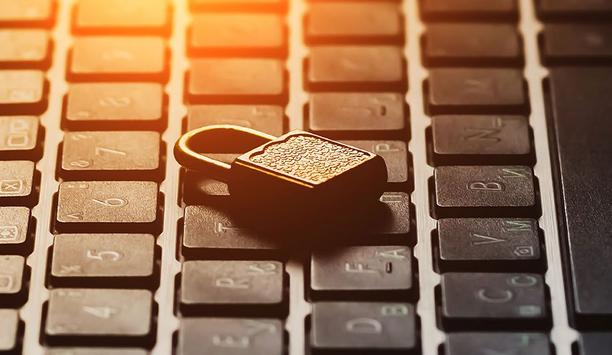
Ensuring cybersecurity of video
Download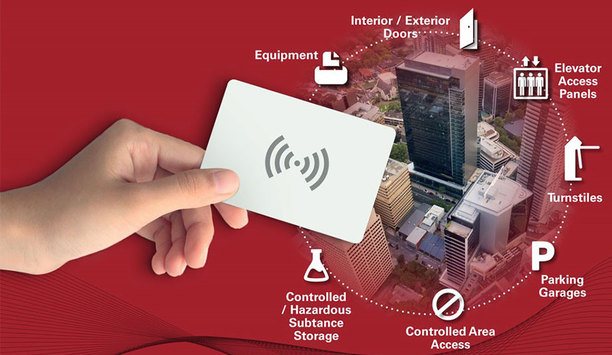
RFID and smartphone readers in physical access control
Download
Access control & intelligent vehicle screening
Download

Videos
Airport security: Manufacturers & Suppliers

The key to unlocking K12 school safety grants
Download
Honeywell GARD USB threat report 2024
Download
The truth behind 9 mobile access myths
Download
5 surprising findings from OT vulnerability assessments
Download
Physical access control
Download
